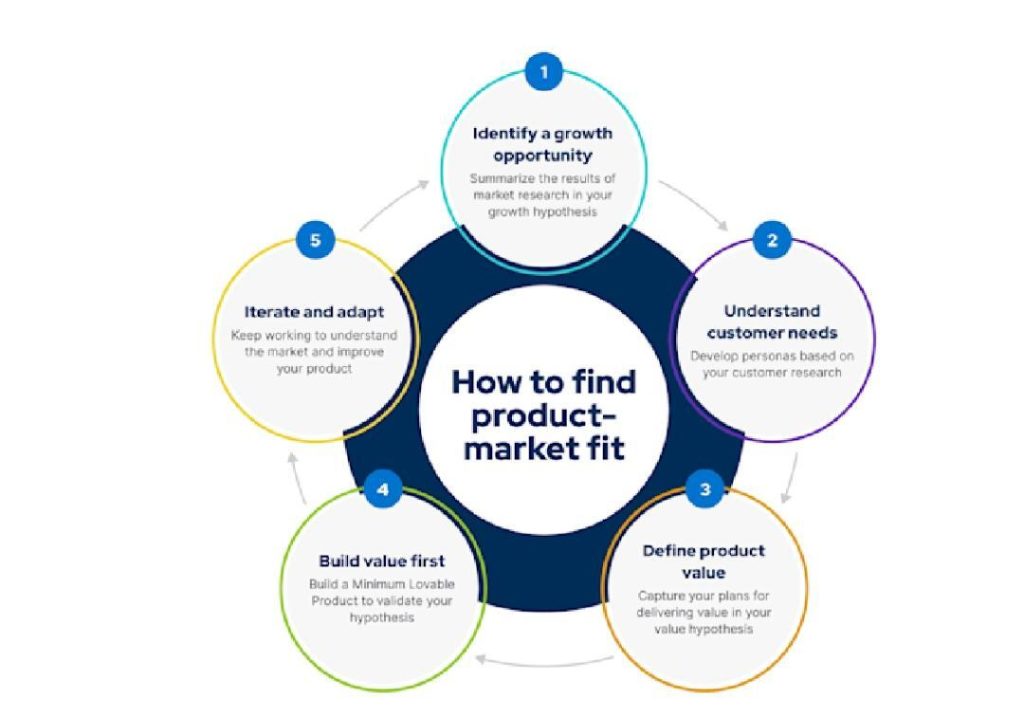
Does AI Speed Up Finding Product-Market Fit?
In today’s fast-paced digital landscape, businesses are under immense pressure to find product-market fit quickly and efficiently. The traditional approach of launching a product, gathering feedback, and iterating can be a time-consuming and costly process. Fortunately, the rise of Artificial Intelligence (AI) has brought about a new era of speed and agility, enabling businesses to accelerate their discovery of product-market fit.
In this blog post, we’ll explore how AI can speed up finding product-market fit by enabling rapid idea testing, real-time feedback analysis, and swift iteration. We’ll also examine the importance of tracking key signals like feature usage, drop-off points, and engagement patterns, and discuss how these insights can help businesses pinpoint what works, remove friction, and adapt instantly.
The Importance of Product-Market Fit
Product-market fit refers to the point at which a product or service meets the needs of its target market, resulting in rapid growth and adoption. Achieving product-market fit is crucial for businesses, as it allows them to build a loyal customer base, drive revenue, and gain a competitive edge in their industry.
However, finding product-market fit can be a challenging and iterative process. It requires businesses to develop a deep understanding of their target market, identify unmet needs, and create a product or service that meets those needs. This process can be time-consuming and costly, and it’s easy to get it wrong.
The Role of AI in Accelerating Product-Market Fit
AI can play a significant role in accelerating the product-market fit process by providing businesses with real-time insights and feedback. By leveraging AI-powered tools and technologies, businesses can:
- Rapidly Test Ideas: AI-powered tools can help businesses quickly test and validate new ideas, reducing the risk of launching a product that doesn’t meet the needs of the market.
- Analyze Real-Time Feedback: AI can analyze large amounts of data, including customer feedback, usage patterns, and drop-off points, to identify areas of improvement and optimize the product or service.
- Iterate Swiftly: AI-powered tools can help businesses iterate quickly, making changes to the product or service based on real-time feedback and data analysis.
Tracking Key Signals
To achieve product-market fit, businesses must track key signals that indicate whether their product or service is resonating with the target market. Some of the key signals to track include:
- Feature Usage: Monitoring feature usage can help businesses identify which features are most popular and which ones are causing friction.
- Drop-Off Points: Identifying drop-off points can help businesses pinpoint where customers are abandoning the product or service, and make changes to improve the user experience.
- Engagement Patterns: Analyzing engagement patterns can help businesses understand how customers are interacting with the product or service, and identify areas for improvement.
Data-Driven Agility
By tracking these key signals and leveraging AI-powered tools and technologies, businesses can achieve data-driven agility. This means being able to quickly respond to changes in the market, adjust the product or service, and adapt to customer needs.
Data-driven agility is critical for achieving product-market fit, as it allows businesses to:
- Reduce Guesswork: By relying on data and analytics, businesses can reduce the amount of guesswork involved in product development and marketing.
- Shorten Validation Cycles: AI-powered tools can help businesses shorten the validation cycle, reducing the time it takes to test and validate new ideas.
- Align Product and Market: By tracking key signals and analyzing data, businesses can align their product or service with the needs of the target market, increasing the likelihood of achieving product-market fit.
Conclusion
Achieving product-market fit is a critical step in the success of any business. By leveraging AI-powered tools and technologies, businesses can accelerate the product-market fit process, reducing the risk of launching a product that doesn’t meet the needs of the market. Tracking key signals like feature usage, drop-off points, and engagement patterns can help businesses pinpoint what works, remove friction, and adapt instantly. By becoming data-driven and agile, businesses can reduce guesswork, shorten validation cycles, and align their product or service with the needs of the target market.
Sources:
https://www.growthjockey.com/blogs/how-to-achieve-product-market-fit-in-the-age-of-ai
Note: The news source is Growth Jockey, a company that specializes in providing businesses with the tools and resources they need to achieve product-market fit.






